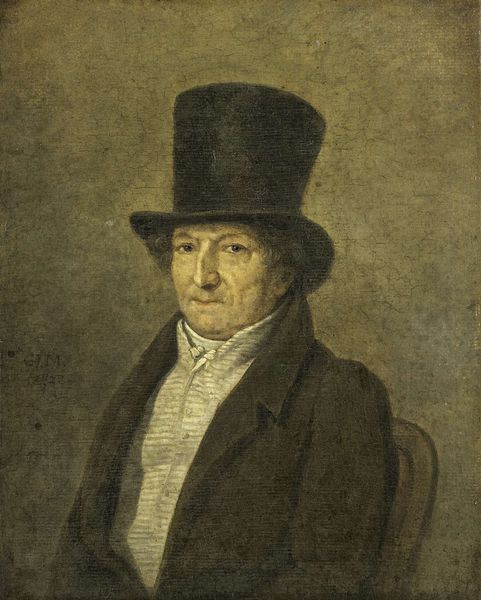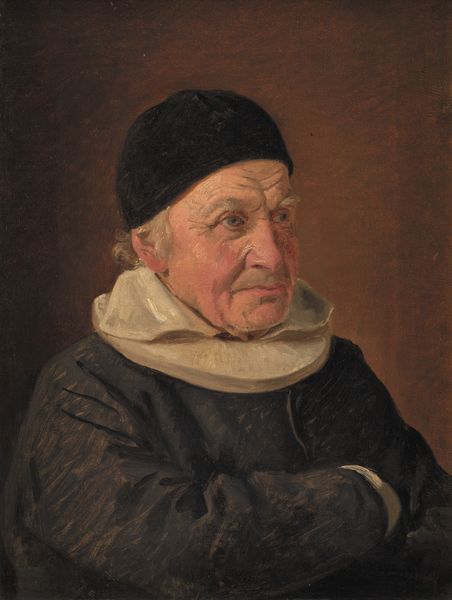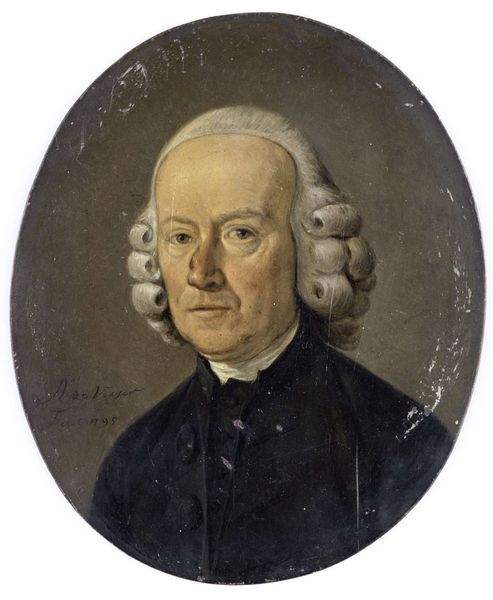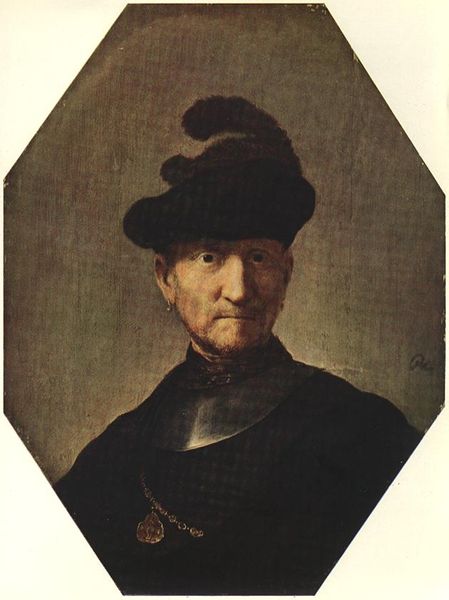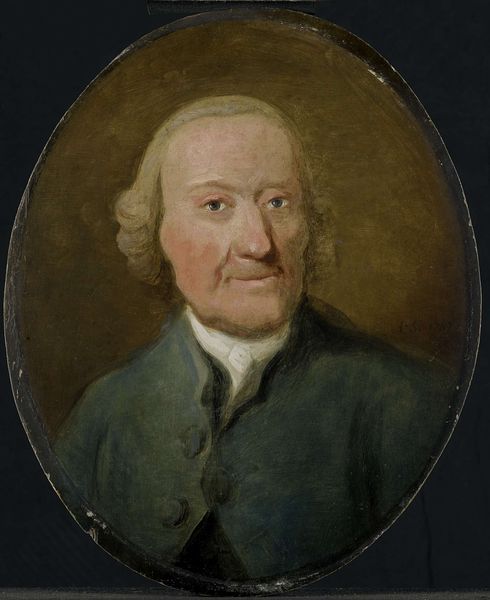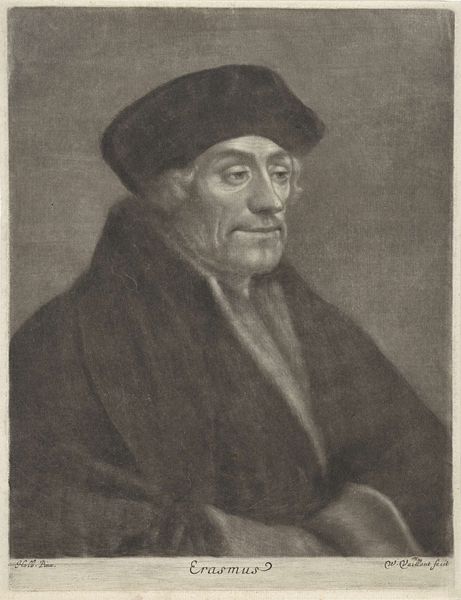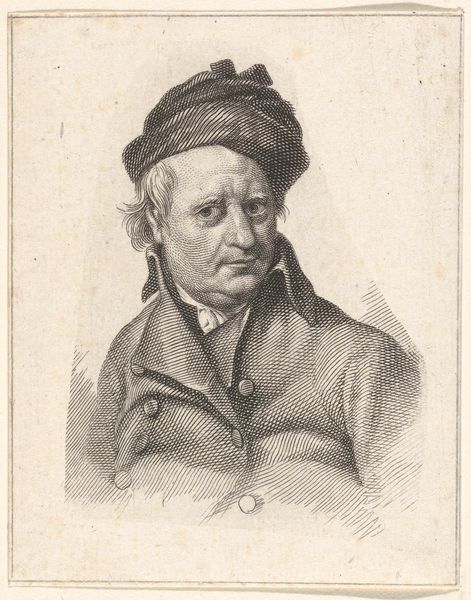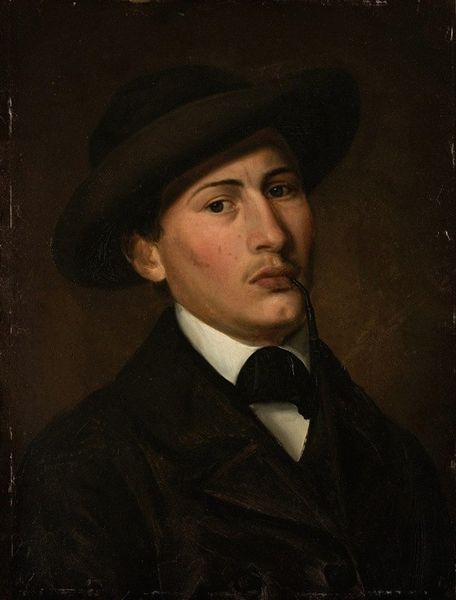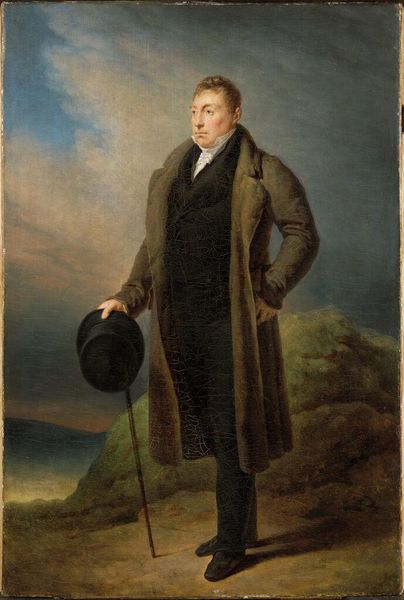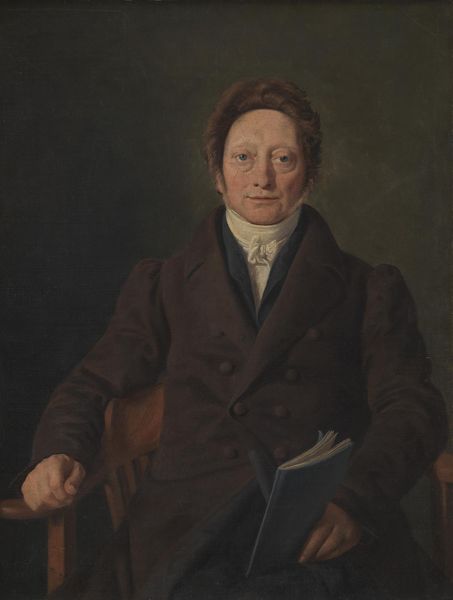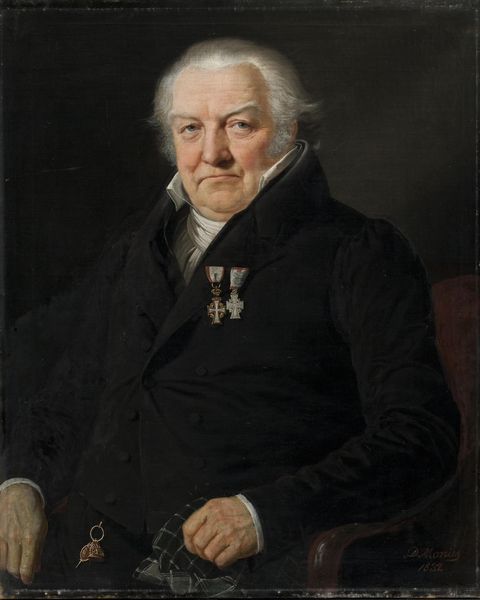
painting, oil-paint
#
portrait
#
portrait
#
painting
#
oil-paint
#
romanticism
#
realism
Dimensions: height 77.5 cm, width 61.5 cm, depth 12.7 cm
Copyright: Rijks Museum: Open Domain
Editor: Here we have a portrait of Hendrik van Demmeltraadt by Jean Augustin Daiwaille, painted sometime in the 1810s. The subdued colours create a really contemplative mood. I am wondering, how do you interpret this work within its historical context? Curator: Considering this portrait was made in the 1810s, it reflects a period of significant societal change, emerging from revolution and entering an era of evolving class structures. What do you observe in the painting that hints at Van Demmeltraadt's social standing, beyond his formal attire? Editor: I guess it's the hat and cane – suggesting respectability but maybe also that he needs a cane to walk? Curator: Exactly. Canes were fashion accessories, signifiers of status, but in this image, do you perceive an affectation of status, or the sincere portrayal of a man aging with dignity in the face of societal transformation? Think about how rapidly class lines shifted in this period. Van Demmeltraadt wasn't necessarily from an aristocratic family. How do you see this reflected in the portrait's realistic yet subtly romanticized style? Editor: That's an interesting tension - the realism and the subtle romanticism. It’s as if the painting straddles two worlds, old and new. I also wonder about Daiwaille's perspective as the artist; was he conscious of these emerging class dynamics as he worked on the portrait? Curator: That's precisely the critical question! Examining Daiwaille's motivations through his lens as an artist navigating a shifting social landscape encourages us to view this work as more than just a portrait, but also a reflection of early 19th-century society and all of the challenges within it. Editor: This gives me a totally new way to view portraiture! Thanks for helping me understand.
Comments
No comments
Be the first to comment and join the conversation on the ultimate creative platform.
